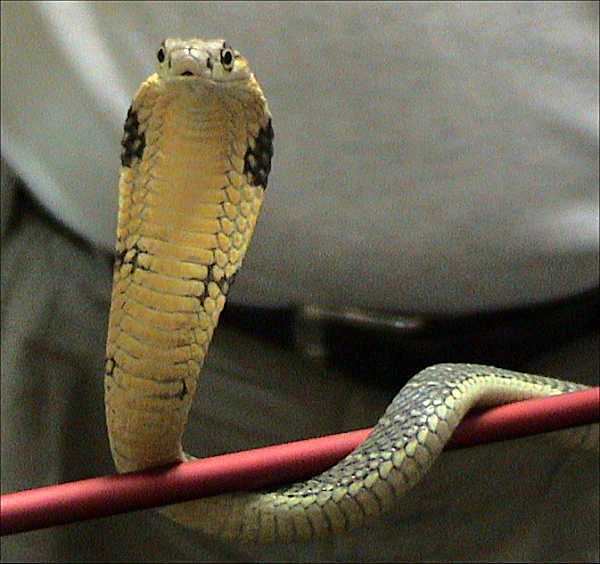 | ||
Cysteine-rich secretory proteins, often abbreviated as CRISPs, are a group of glycoproteins. They are a subgroup of the CRISP, antigen 5 and Pr-1 (CAP) protein superfamily and are substantially implicated in the functioning of the mammalian reproductive system. CRISPs are also found in a variety of snake venoms where they inhibit both smooth muscle contraction and cyclic nucleotide-gated ion channels.
Contents
Structure
Glycoproteins are conjugated proteins in which the non-protein group is a carbohydrate glycan – typically an oligosaccharide or small polysaccharide, but occasionally a monosaccharide. The glycan is covalently bound to a side chain of the polypeptide, rather than to the C- or N-terminus of the protein in a process called glycosylation. CRISPs are glycoproteins in which the primary structure is rich in the amino acid cysteine. Cysteine residues are typically oxidised to cystine in proteins, as the formation of disulfide bonds plays an important role in protein folding and the stabilisation of tertiary structure – this is particularly important with proteins secreted to the extracellular medium such as CRISPs. However, CRISPs are atypical in that they often possess significant numbers of native (unoxidised) cysteine residues in addition to cystine residues involved in disulfide bonds. The King Cobra venom ophanin, for example, has 16 strictly conserved cysteines in addition to 8 disulfide bonds.
Mammalian reproduction
CRISPs are found in the testes and epididymis of mammals, and are also involved in the process of fertilisation. In the spermatogenesis process (development of the spermatozoa in the testis), the CRISP2 protein is incorporated into the acrosome where it is believed to be involved in the adhesion of germ cells with Sertoli cells. CRISP2 also forms part of the sperm tail where it is thought to be involved in regulating flagellar beating. Proteins CRISP1 and CRISP4 are both found in the epididymis where they are also incorporated within the spermatozoa as it matures. Protein CRISP3 is found in seminal fluid, excreted from the prostate although its function is unknown.
During capacitation, the penultimate stage of spermatozoa maturation, the acrosomal sperm head membrane is destabilised to allow greater binding between oocyte and sperm. CRISP1 binds to surface of the sperm leading to a quiescent state of storage prior to capacitation. The mechanism is believed to involve inhibition of ion channel activity, similar to the mechanism of action of the other major function of CRISPs in snake venom. Research also suggests that CRISPs are involved in the oocyte-sperm binding needed for fertilisation. Given the involvement of CRISPs in several stages of human reproduction, it is unsurprising that applications in treatment of infertility and as contraceptives are being actively investigated.
Snake venom
CRISPs are found in the venom of a wide variety of snake species. Examples include ablomin from the Japanese Mamushi snake (Gloydius blomhoffi, formerly Agkistrodon blomhoffi), latisemin from the Erabu sea snake (Laticauda semifasciata), ophanin from the King Cobra (Ophiophagus hannah), piscivorin from the Eastern Cottonmouth (Agkistrodon piscivorus) and triflin from the Habu snake (Trimeresurus flavoviridis) – each of these proteins is named for the snake species in which it was discovered. These venoms are toxic due to their blocking of calcium channels and also because they reduce potassium-induced smooth muscle contraction. Among the four CRISPs isolated from the Monocled Cobra (Naja kaouthia) and the three from the Egyptian Cobra (Naja haje), ion channel activity occurred by blocking of cyclic nucleotide-gated ion channels. One of the N. haje CRISPs was the first example of an acidic CRISP in reptilian venom. The selective ion channel activity of snake CRISPs, coupled with the variety of CRISPs available as the pool of venom proteins appears highly variable between (at least) cobra species, provide a valuable tool for probing the mechanisms of ion channel activity.
